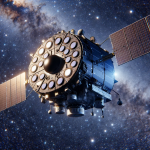November enthusiasts have a celestial treat awaiting them as the Leonid meteor shower returns. Known for its spectacular displays, this annual event attracts skywatchers globally. This year’s occurrence could offer unexpected enhancements, promising a more vivid experience for observers prepared to look skyward.
The Leonid meteor shower has a cyclical pattern, showcasing intense displays approximately every 33 years. Following the notable occurrence around 1999, experts are now evaluating the potential for increased meteor activity in 2024. Previous meteor stream interactions have shaped current forecasts, establishing a basis for anticipation this year.
What to Expect from the 2024 Leonid Meteor Shower?
The 2024 Leonid meteor shower is projected to reach its annual peak on November 17th, offering observers an expected rate of 15-20 meteors per hour under optimal conditions. While this aligns with typical yearly displays, enthusiasts are hopeful for higher activity resulting from Earth intersecting with older meteor streams. The visibility is particularly favorable for regions in Europe during the early morning hours.
Could an Outburst Occur This Year?
There is a possibility of a meteor outburst if Earth encounters specific dust trails left by comet 55P/Tempel-Tuttle. Jérémie Vaubaillon from the Paris Observatory IMCCE stated,
“Earth may encounter three older streams from comet 55P/Tempel-Tuttle, potentially increasing the meteor rate.”
These interactions could enhance the number of visible meteors, surpassing usual expectations and providing a more spectacular show than typical yearly rates.
How Can Observers Maximize Their Viewing Experience?
To optimize observations of the Leonid meteor shower, enthusiasts should seek locations with minimal light pollution during the early morning hours. Adopting techniques like using tripod-mounted cameras with wide-angle lenses can capture more meteors. Despite the waxing gibbous moon potentially reducing visibility, strategic planning of observation times and equipment settings can help mitigate light interference and enhance viewing quality.
Preparation and optimal viewing strategies are essential for enthusiasts aiming to witness the Leonid meteor shower’s potential highlight displays. Staying informed about forecasting updates and aligning observation times with predicted peak activities can significantly improve the experience. As celestial events hinge on precise celestial mechanics, flexibility and readiness to adapt to changing conditions will allow observers to fully appreciate the ephemeral beauty of meteor displays.










